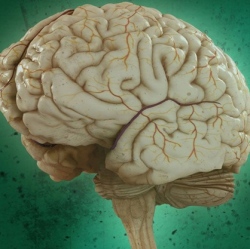
A start-up called Knowm says it will soon begin commercializing a state-of-the-art technique for building neuromorphic chips. Knowm claims they achieved a major breakthrough that it should be able to push the technology into production within a few years.
The basis for Knowm’s work is a piece of hardware called a memristor, which functions much like synapses do in the brain. Rather than committing certain information to a software program and traditional computing memory, memristors are able to “learn” by strengthening the electrical charge between two resistors (the “ristor” part of memristor) much like synapses strengthen connections between commonly used neurons.
Memristors can, in theory, make computer chips much smarter, but also very energy efficient. Just as the human brain functions better than a super computer on about 20 watts, which is barely enough to run a dim light bulb, memristors could mean massive changes in computer technology.
“This memristor enables efficient on-chip learning. We can do away with the supercomputers. We can create chips that are intrinsically adaptive,” Alex Nugent, Knowm’s founder and CEO, says. The implications for robotics, driverless cars, and other devices is incredible. Memristors, especially the ones his company is working on, offer “a massive leap in efficiency” over traditional CPUs, GPUs, and other hardware now used to power artificial intelligence workloads.
Knowm’s recently announced breakthrough is the development of a technique it calls bi-directional incremental learning, accomplished thanks to a collaboration along with a memristor expert from Boise State University. In short, this means the resistors, or synapses, can pass charge in both directions and therefore tweak the weight of their connections more accurately than existing memristor technologies, which only send an electrical charge in one direction.
The Knowm BS-AF-W Memristor, pictured above, is what Nugent calls “the ideal learning memristor.” It is capable of bi-directional incremental operation, which means that the resistance of the memristor can be nudged in both directions. The resistance is an analog to the weight of a synapse, and the process of learning comes about through nudging a device so that it hones itself onto a certain value.
Nugent said this is the final piece of the puzzle that he has been working on for a decade. Knowm already sells memristors and emulation kits for researchers to experiment with. If it’s able to attract the right funding and partnerships with chip fabricators, Nugent thinks his approach to super-smart, super-efficient computing could be available for demos in about two years and production after that, possibly as co-processors on traditional CPU-based motherboards.
“I want to do what brains can do,” he said. “They’re phenomenal enough. “Everything eventually reaches its physical limits. We are currently witnessing the end of Moore’s Law scaling in CMOS electronics just as we are finally gaining the computational capacity needed to demonstrate the potential of machine learning,” Nugent said in a press release.
“Pursing the same digital computing methodologies for machine learning systems keeps us from realizing the full potential of machine learning and artificial intelligence. Through AHaH Computing, Knowm is making hardware soft, uniting memory and processing for synaptic operations, and in the process helping to define the post-Moore’s Law era.”
